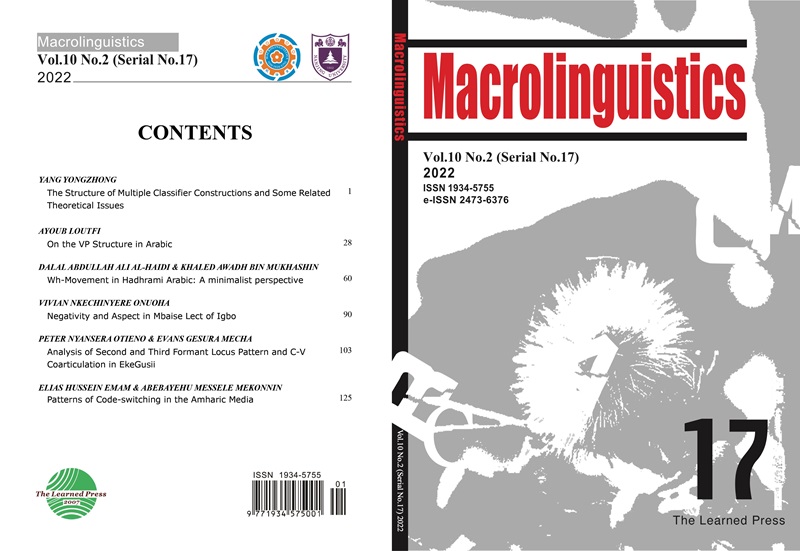汉语句子复合体的表达方法(学术讲座)
引用次数: 0
摘要
姚静。摘要:2011年11月24日,复旦大学著名已故中国当代语言学家戴耀敬教授受南京大学文学院邀请,在“句子补全问题学术论坛”(第2期)上发表了题为《汉语句子补全的表达方法》的学术演讲。本文主要从两个方面论述了汉语句子复杂化的表现方法。一种是思想内容的复杂性与结构的复杂性之间的协同关系,即深入与深入、浅入与浅出、深入与浅出,浅入深出(结构复杂的复杂思想、结构简单的简单思想、结构复杂的复杂性思想、结构复杂性思想)。另一种是络合类型。从三个层次来看,有句法表达、语义表达和语用表达。此外,多语言混合也会使句子复杂化。句子复杂化的句法表现形式包括句子结构复杂、长度长、层次多等;语义表达主要是歧义问题,包括五种歧义:语音歧义、词汇歧义、结构歧义、语义歧义和语用歧义;语用表达是指理解一个句子的含义需要结合上下文本文章由计算机程序翻译,如有差异,请以英文原文为准。
The Expression Methods of Chinese Sentence Complexification (Academic Lecture)
Yaojing. Abstract: The famous deceased contemporary Chinese linguist Prof. Dai Yaojing from Fudan University was invited by School of Liberal Arts of Nanjing University to give an academic speech, titled The Expression Methods of Chinese Sentence Complexification , at the “Academic Forum on Sentence Complexification Issues” (No.2) on November 24, 2011. The speech focuses on the expression methods of Chinese sentence complexification, involving two major aspects. One is the cooperative relationship between the complexity of the thought’s content and the complexity of the structure, that is, deep in and deep out, shallow in and shallow out, deep in and shallow out, shallow in and deep out (complicated thoughts with complicated structures, simple thoughts with simple structures, complicated thoughts with simple structures, simple thoughts with complicated structures). The other is the types of complexification. From the perspective of three-level, there are syntactic expression, semantic expression and pragmatic expression. In addition, multilingual mixing can also complicate sentences. The syntactic expressions of the sentence complexification include complex sentence structures, long length, multiple levels, etc; Semantic expression is mainly the issue of ambiguity, including five kinds of ambiguity: phonetic ambiguity, lexical ambiguity, structural ambiguity, semantic ambiguity and pragmatic ambiguity; pragmatic expression refers to understanding the meaning of a sentence requires a combination of contexts at all
求助全文
通过发布文献求助,成功后即可免费获取论文全文。
去求助
来源期刊
自引率
0.00%
发文量
83
审稿时长
20 weeks
期刊介绍:
Macrolinguistics (ISSN 1934-5755, e-ISSN 2473-6376) is an international academic journal which is specialized in research papers of non-Indo-European linguistics. It is published biannually by The Learned Press and funded by the Double First-Class Initiative of Nanjing University. It aims at contributing to the complementarity and interaction of linguistic research worldwide.

 求助内容:
求助内容: 应助结果提醒方式:
应助结果提醒方式:


